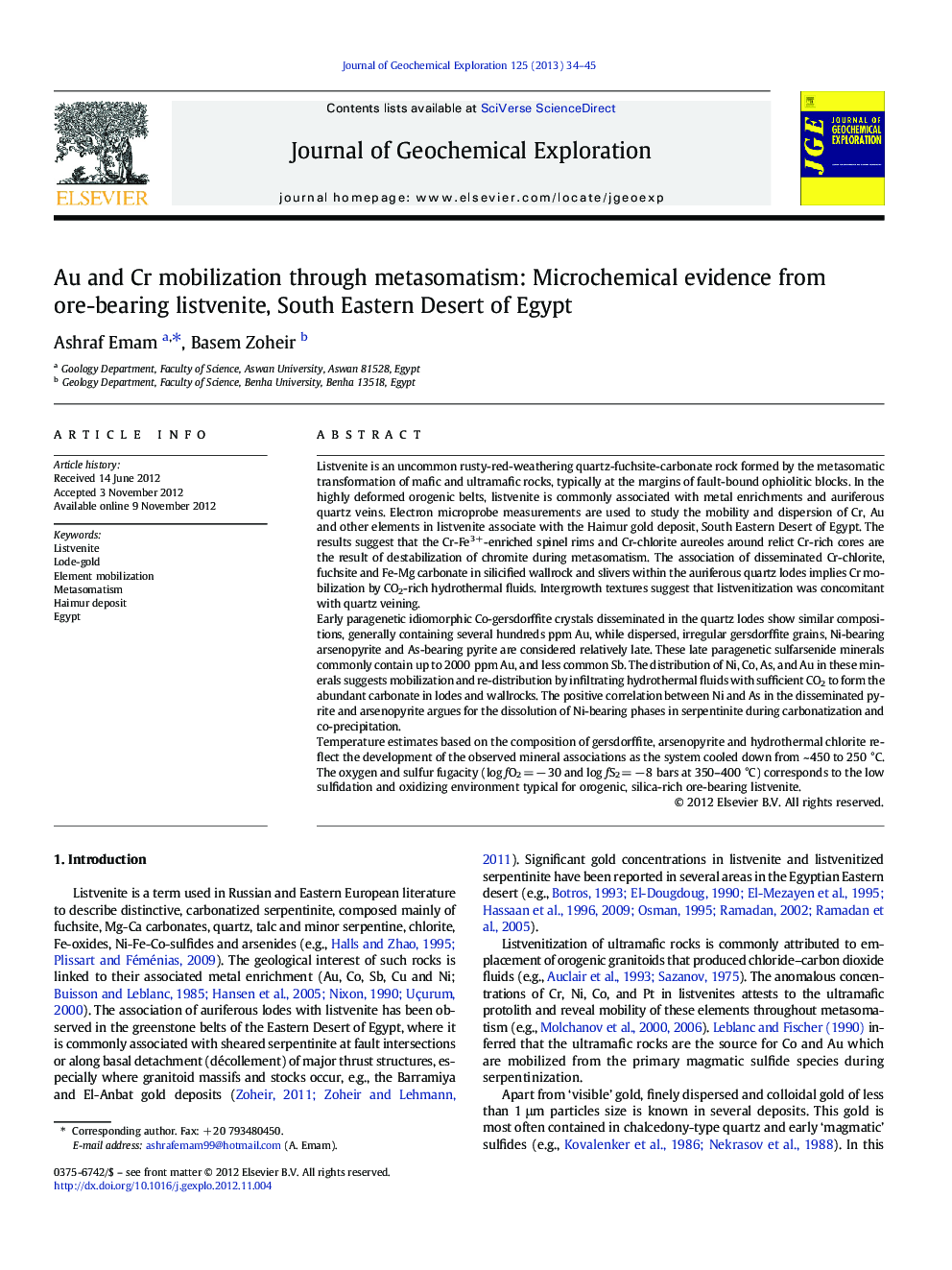| کد مقاله | کد نشریه | سال انتشار | مقاله انگلیسی | نسخه تمام متن |
|---|---|---|---|---|
| 4457606 | 1620931 | 2013 | 12 صفحه PDF | دانلود رایگان |

Listvenite is an uncommon rusty-red-weathering quartz-fuchsite-carbonate rock formed by the metasomatic transformation of mafic and ultramafic rocks, typically at the margins of fault-bound ophiolitic blocks. In the highly deformed orogenic belts, listvenite is commonly associated with metal enrichments and auriferous quartz veins. Electron microprobe measurements are used to study the mobility and dispersion of Cr, Au and other elements in listvenite associate with the Haimur gold deposit, South Eastern Desert of Egypt. The results suggest that the Cr-Fe3 +-enriched spinel rims and Cr-chlorite aureoles around relict Cr-rich cores are the result of destabilization of chromite during metasomatism. The association of disseminated Cr-chlorite, fuchsite and Fe-Mg carbonate in silicified wallrock and slivers within the auriferous quartz lodes implies Cr mobilization by CO2-rich hydrothermal fluids. Intergrowth textures suggest that listvenitization was concomitant with quartz veining.Early paragenetic idiomorphic Co-gersdorffite crystals disseminated in the quartz lodes show similar compositions, generally containing several hundreds ppm Au, while dispersed, irregular gersdorffite grains, Ni-bearing arsenopyrite and As-bearing pyrite are considered relatively late. These late paragenetic sulfarsenide minerals commonly contain up to 2000 ppm Au, and less common Sb. The distribution of Ni, Co, As, and Au in these minerals suggests mobilization and re-distribution by infiltrating hydrothermal fluids with sufficient CO2 to form the abundant carbonate in lodes and wallrocks. The positive correlation between Ni and As in the disseminated pyrite and arsenopyrite argues for the dissolution of Ni-bearing phases in serpentinite during carbonatization and co-precipitation.Temperature estimates based on the composition of gersdorffite, arsenopyrite and hydrothermal chlorite reflect the development of the observed mineral associations as the system cooled down from ~ 450 to 250 °C. The oxygen and sulfur fugacity (log fO2 = − 30 and log fS2 = − 8 bars at 350–400 °C) corresponds to the low sulfidation and oxidizing environment typical for orogenic, silica-rich ore-bearing listvenite.
► Hydrothermal Cr-rich minerals formed from Cr-spinels through pervasive metasomatism.
► Cr-chlorite, fuchsite and Fe-Mg carbonate association implies Cr mobilization.
► Positive correlation between Ni, As and Au in sulfarsenides suggests Au mobilization.
► The estimated formation conditions are fS2 = − 8, fO2 of around − 30, and 400–250 °C.
► Cr-Ni-Au dispersion can guide exploration programs in Haimur mine and similar areas.
Journal: Journal of Geochemical Exploration - Volume 125, February 2013, Pages 34–45